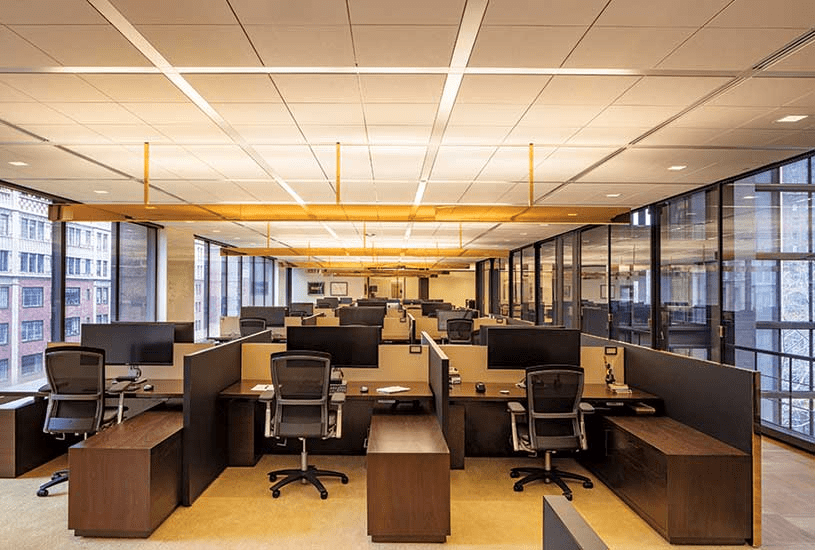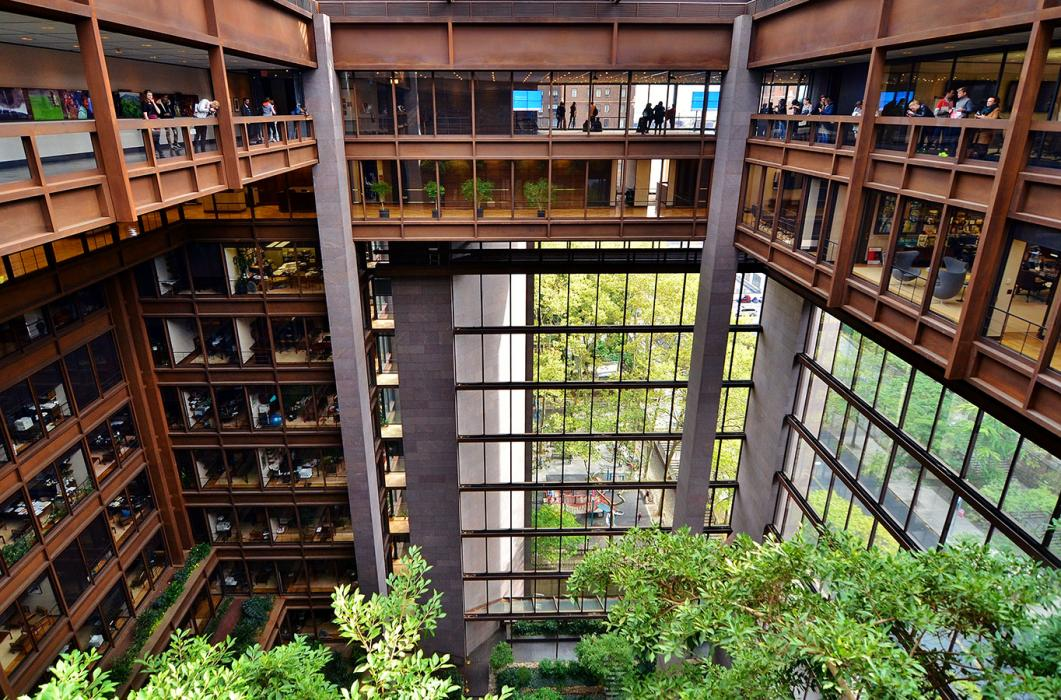This article is about a refined, beautiful American building that has been attracting a lot of attention for sixty years of its existence. It will be about the Ford Foundation Center for Social Justice, its creation, construction and architectural features. Find out more about the building at manhattan-future.

Creation of the building
The Ford Foundation Center for Social Justice is a twelve-storey office building located in Manhattan at 320 East 43rd Street. The building was constructed in the style of late modernism.
The building originates from the distant 1963. It was then that the largest American private fund, the Ford Foundation, decided to build its own headquarters on 43rd Street. Such architects as Joseph N. Lacy, John Dinkeloo and Kevin Roche worked on the design of the building. The final project worth ten million dollars was ready in 1964. Construction valued at sixteen million dollars was completed on December 8, 1967.
In general, the office provided for the placement of approximately six hundred employees. This was the case until 1975. Later, due to the economic crisis, the owners of the office had to fire a significant number of employees and hand over the vacated premises to tenants. Then, there were difficult times for the fund because their grants dropped from one hundred ninety-seven million dollars by seventy-five million dollars. Despite this, the company still preserved its status as the largest private fund in the United States.
In 1997, the New York City Landmarks Preservation Commission recognized the building of the fund as a landmark of the city and called it one of the most attractive modern buildings that had appeared in New York after World War II.
In 2015, the building was reconstructed, leaving the original design as close as possible. The reconstruction process was completed in 2018. It was after restoration that the building received its modern name the Ford Foundation Center for Social Justice.

Architecture of the building
Now let’s talk a little bit about the architectural features of the Ford Foundation Center for Social Justice. The building was built in the style of late modernism. As mentioned above, the center has 12 floors and reaches 180 feet (55 m). The interior space covers 415 thousand square feet (38,600 sq m). The structure has a cubic shape. The major part of the facade is covered by a glass surface, which consists of approximately 60 thousand glass pieces. The rest are concrete piers and walls lined with gray-pink or mahogany granite. The upper floors have a somewhat convex design and resemble stairs in shape. The main entrance is located between two diagonal piers.
Now let’s talk about the internal filling. The floor of the premises was primarily wooden. The furniture was leather and wooden. Almost all the decorative metal parts in the building were made of brass. Offices were divided, as a rule, by a grid of modules 6 feet (1.8 m) wide. Managers had the best conditions. The office was nine modules wide and overlooking the atrium. Lower status employees had, respectively, slightly worse conditions and smaller premises. In addition to the offices, there was a luxurious balcony, a conference room, a dining room and an art gallery in the building. In addition to the mentioned above, in the room there was an atrium with a glass ceiling 160 feet (49 m) high. There was a garden that had several tiers. Among the green variety, there were eighteen aquatic plants, thirty-seven trees, one hundred and forty-eight vines, a thousand bushes and twenty-two thousand ground cover plants. However, over time, the filling has somewhat changed. Now, subtropical flora dominates in the modern atrium. It is also worth noting that this area is currently accessible to visitors.